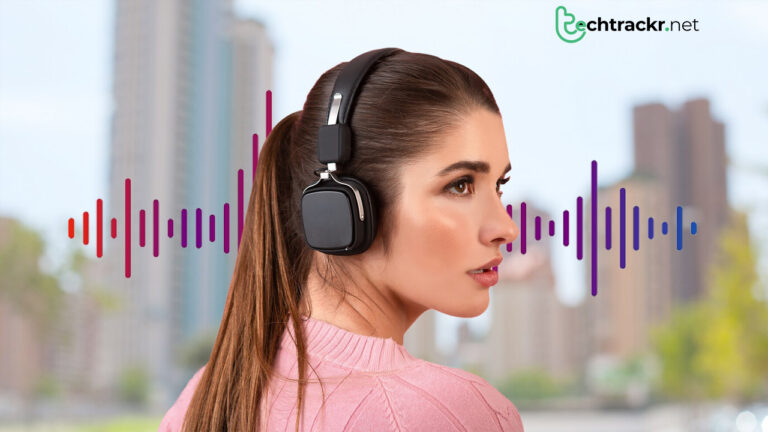
Right now, the headphone and earbud game is off the charts. Whether you’re rocking a phone, computer, TV, or whatever else, you’ve got an insane variety to pick from. No matter your budget, there’s a perfect fit for everyone, loaded with all the cool, smart features you crave (as long as you’re ready to splash some cash).
But here’s the downer for folks trying to snag some new buds: The headphone scene is crazier than ever. It’s a jumble of terms that sound like gibberish unless you’re deep into the audio-visual scene, and one of the trickiest is active noise cancellation (ANC) versus passive noise cancellation. If that distinction has always left you scratching your head, I’ve got the lowdown you need!
Noise cancellation explained
So, headphones and earbuds are all about blasting out your tunes: The fancier the gadget, the crisper the sound, and the more audio info it can whip into sweet waves. Nowadays, these babies can pull off some cool moves, like pumping in environmental sounds with Dolby Atmos. But, if unwanted noise crashes the party, your audio vibes take a hit.
The nitty-gritty of your audio joyride can get messed up by regular noises, like cars zooming by or folks chatting up a storm at the airport. And the heavy-duty sounds, like a subway’s rumble or airplane noise, are even worse for messing with your audio vibes.
So, here’s the deal with noise cancellation: it tries to shut down those outside noises before they crash your ear party while you’ve got your headphones or earbuds on. Generally, full-sized headphones with ear cups do a slightly better job than earbuds, but the earbuds these days are also packing some pretty advanced noise-canceling tricks.
Also Read: How The Humane AI Pin aims to replace your smartphone
What is active noise cancellation?
So, ANC (active noise cancellation) is like a superhero move that actively fights off annoying background noise. Pulling off this stunt needs extra gear and some top-notch software. Usually, each headphone or earbud gets a special microphone—fancy versions might even have a bunch of them—to catch those outside sounds. Then, another set of speakers takes that info and cooks up sound waves at just the perfect frequency and power to kick out the incoming noise. It’s like a battle of sound waves, and the unwanted noise gets
It goes down super quick, so the annoying outside noises never even get a chance to bug your ears. ANC is like a ninja—it can quickly switch up its moves to handle new sounds on the fly. Nowadays, the fancy ANC is often called “adaptive active noise cancellation” because of this slick adaptability. But here’s the kicker: not all ANC tech is created equal, and the quality can be all over the map depending on the brand. Sony, Apple, and Bose, though? They’re the big dogs when it comes to top-notch ANC.
Now, here’s the real talk—this tech isn’t flawless. It can hit you hard in the wallet, especially if you’re gunning for the top-tier versions. ANC isn’t a superhero against sudden loud noises; it’s more of a champ with the ongoing background racket. Plus, all that fancy footwork sucks up a ton of battery juice, especially for wireless headphones. But hey, when it’s in action, it sure knows how to bring the peace to your listening game.
What is passive noise cancellation?
Passive noise cancellation is all about the design of your headphones or earbuds doing the heavy lifting to keep the outside noise at bay. No fancy tech gadgets are actively working to kick out the noise. Instead, it’s all about using the right materials, the right build, and a snug fit to create a solid seal around your ears and shut out the racket.
How well passive noise cancellation works really comes down to how awesome your headphones are. Every pair does some of it, but the top-notch ones really build it into their design. Now, when it comes to earbuds, it’s all about those tips and how snugly they fit in your ears. But here’s the twist—it varies a ton from person to person, depending on those unique ears of yours.
If you think this doesn’t quite qualify as “cancellation” in the truest sense, you’re not alone. That’s why some folks also call it passive noise isolation.
Advantages of having active noise cancellation
- Does the job: It kicks most or all of that background noise to the curb.
- Widely accessible: Even earbuds from big players like Sony and Apple pack a punch with ANC these days.
- Double the defense: ANC doesn’t kick passive noise cancellation to the curb; it adds an extra layer of defense, giving you the best of both worlds.
- Control in your hands: Want a break from the ANC action? No problem. You can flip the ANC mode on or off whenever the mood strikes.
Advantages of having passive noise cancellation
- Budget-friendly vibes: Since passive noise cancellation doesn’t need any fancy extras, these headphones usually come with a lower price tag.
- Keep it simple: No need to fiddle with turning passive noise cancellation on or off—it’s a constant companion when your headphones are on.
- Top-notch all around: Headphones rocking solid passive noise cancellation often score high on the fit, durability, and comfort fronts. Quality speaks for itself.
Also Read: ISS turns 25: Some interesting facts about the space laboratory
Which noise cancellation is better?
Let’s break it down: Passive noise cancellation is just about having well-designed headphones. The true star is ANC, and it’s the big decision-maker for buyers. It usually comes with a higher price tag, and not everyone’s a fan. It’s all about what floats your boat.
But here’s the deal—it does whip up a super quiet space for your ears, letting you catch every little detail in your audio. That’s key for the hardcore music buffs, folks trying to escape the noise nuisance, and anyone struggling to catch dialogue in videos while on the move.
Last but not least, remember this: Over-ear headphones usually bring the A-game in passive noise cancellation because of how they’re built. So, if you’re after the max noise cancellation without diving into ANC, that’s the route to take.
